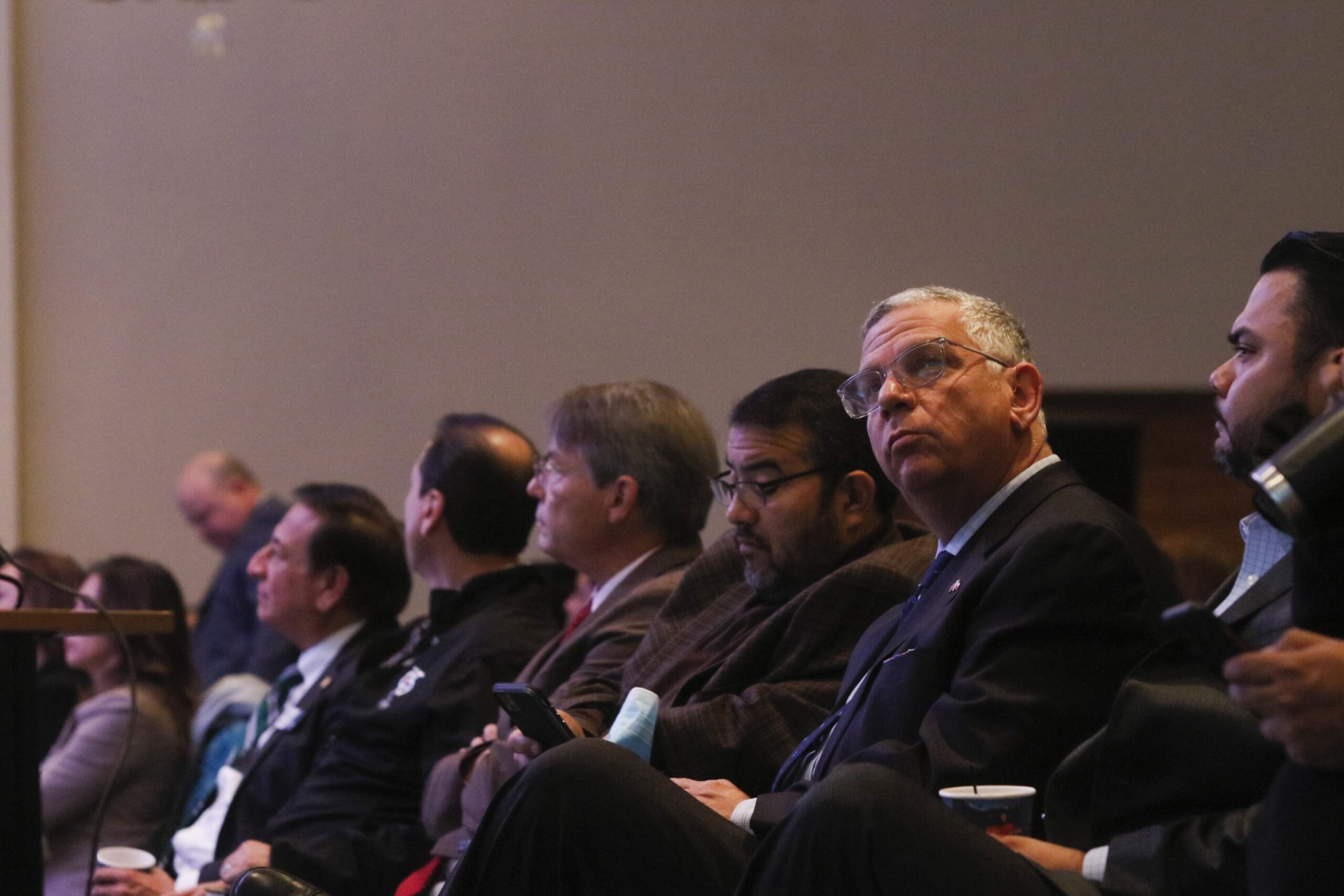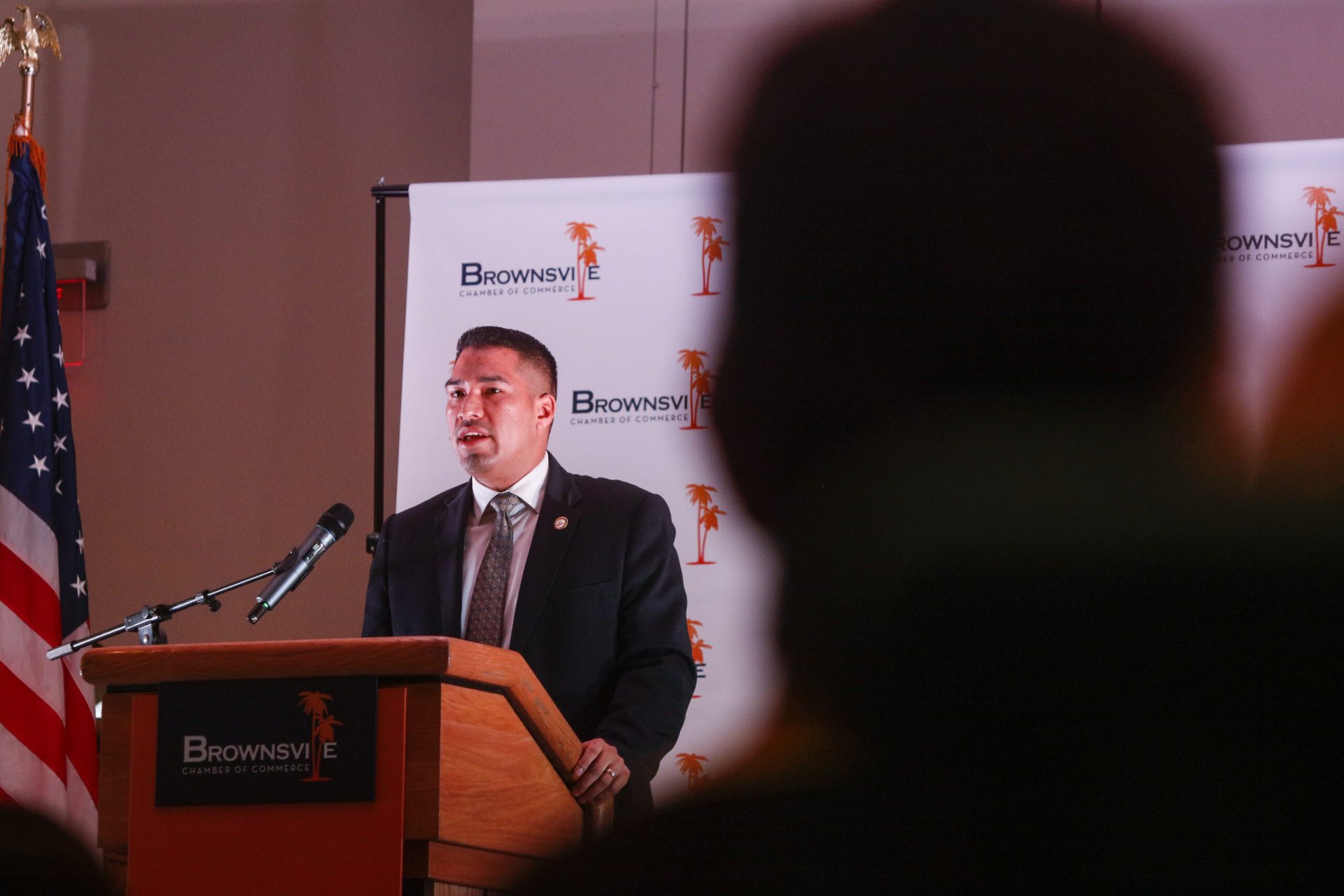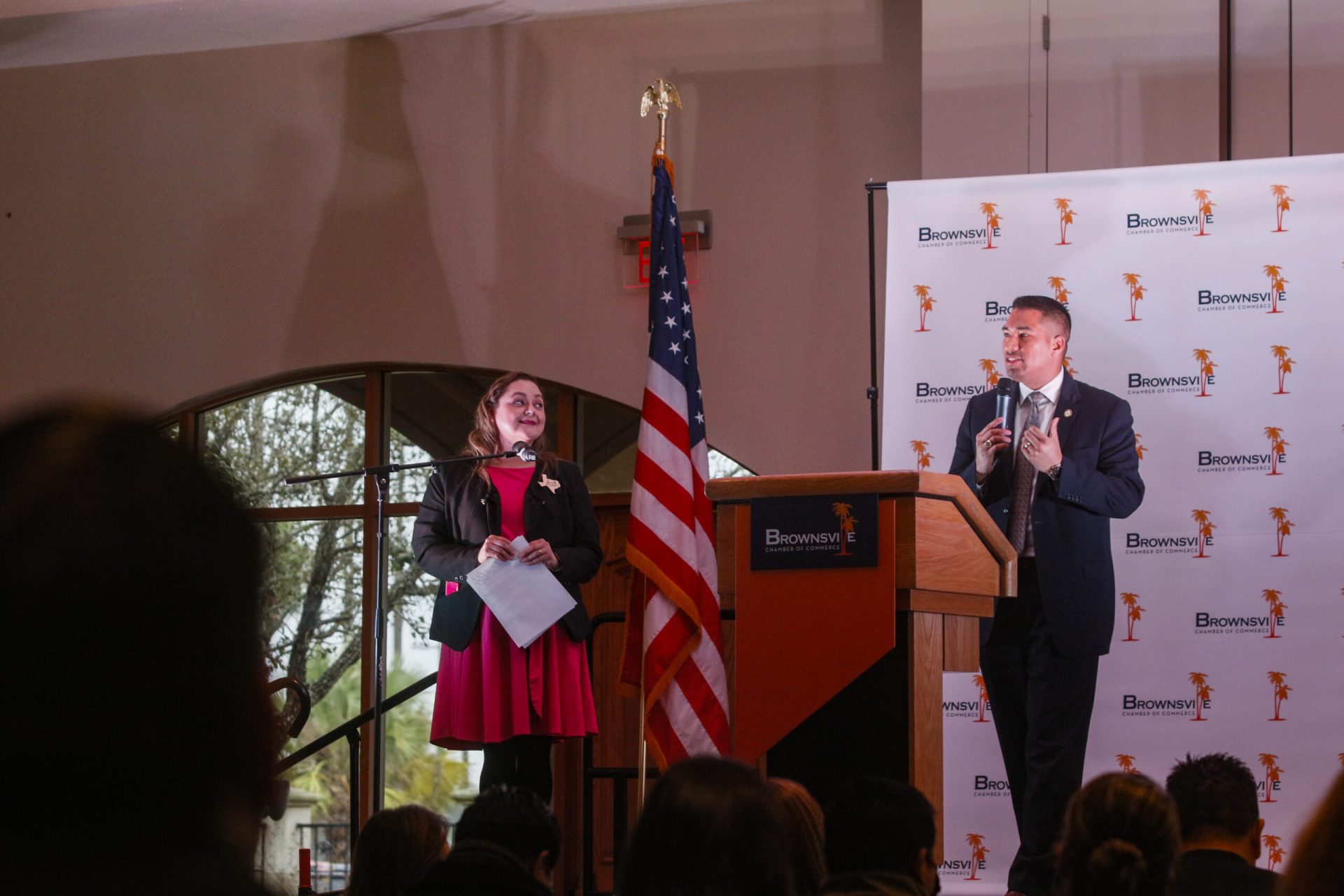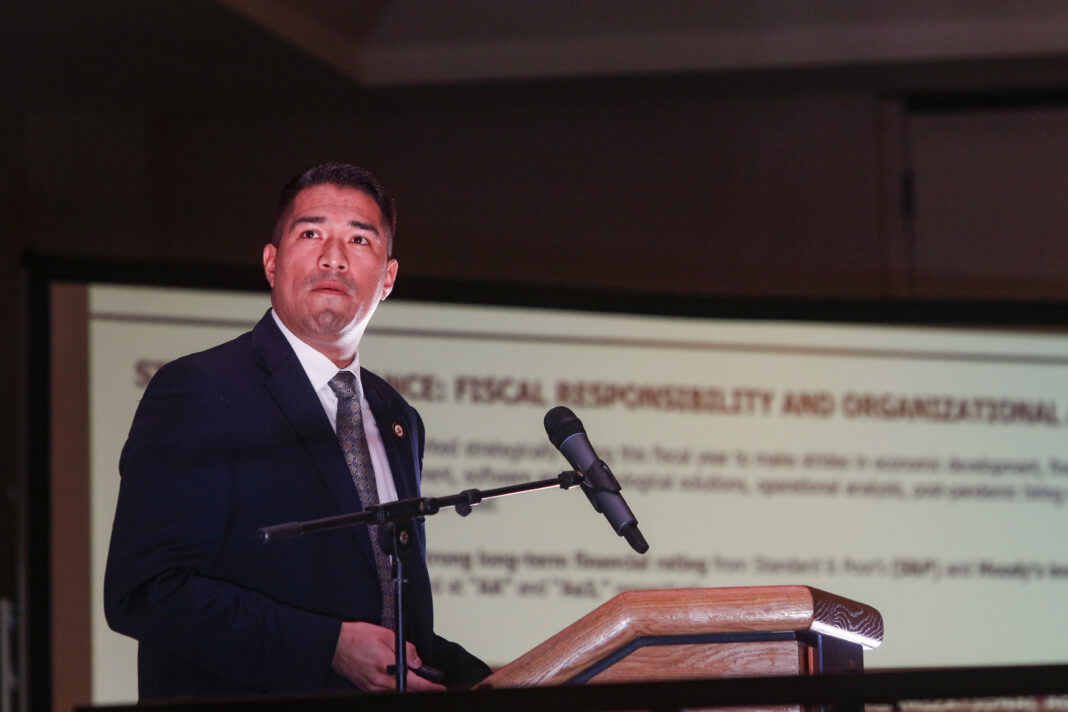The city of Brownsville is flush with cash, at least temporarily, and is taking advantage of the situation to address big-ticket priorities without incurring additional debt.
That’s one of the big takeaways from City Manager Noel Bernal’s third annual city update, which he delivered Friday morning at the Brownsville Events Center at an event, hosted by the Brownsville Chamber of Commerce.
With an (unaudited) unassigned fund balance of $52.1 million, historically the city’s highest fund balance ever, Brownsville is on firm financial footing with a “very healthy” fiscal outlook, Bernal said.
The city’s general-fund reserve policy requires it to have 90 days’ worth of expenses in case of loss of revenue, but the city currently has a 167-day reserve, compared to a 91-day reserve at the end of fiscal year 2021, he said. Bernal attributed it in part to conservative planning, explaining that the city relied on third-party forecasting and recession numbers to come up with a sales-tax projection that totally missed the mark — in a good way.

“We planned for the worst-case scenario,” Bernal said. “We planned for a 15-percent decline in sales tax.”
What happened instead was a nearly 20-percent increase in sales-tax revenue thanks to federal relief funding, tax credits and other factors, he said.
Bernal stressed that the current situation is the result of a one-time financial windfall and that the city is determined to be prudent about spending it. The city does have needs that require money, however, and one top priority is the long list of deferred maintenance projects. An accelerated program of dealing with deferred maintenance is underway, without having to resort to borrowing as in normal times thanks to the huge fund balance, Bernal said.
“We’re being prudent and avoiding debt and using cash on hand to fund a lot of our needs: fleet, facilities, heavy equipment, things of that sort,” he said.

The city is cash-funding this and other priorities to the tune of $16.8 million. Among those expenditures is $4.1 million to replace the city’s aging fleet of heavy equipment used for street maintenance and repair, $4 million for high-priority facilities needs based on the results of a comprehensive, citywide facilities assessment, and $1.4 million for traffic signal synchronization.
Other big-ticket items include replacing downtown’s water and wastewater infrastructure, which will cost $14 million and support the revitalization of downtown, a key economic driver for the city, Bernal said. Those funds will come out of the $65 million in pandemic relief money the city was allocated through the Biden administration’s American Rescue Plan, he said.
The ARP funding will also pay for, among other things, expanding broadband internet access across the city ($19.5 million), building a regional detention facility for water at Veterans International Bridge at Los Tomates to address flooding ($11.5 million), building the West Rail Trail earlier than anticipated ($8.8 million), and revamping infrastructure at Gladys Porter Zoo ($5.5 million).

Because ARP funding was a one-time infusion and future sales-tax increases are likely to be more modest, it’s vital that the city pursue a path of sustainability — the reason behind another major push: digitization of city functions and services across the board to boost efficiency and cut costs, Bernal said.
“It’s a way for us to get a high (return on investment) with one-time revenues by investing in systems that can be digitized and automated,” he said. “We’ve embarked on what we call the strategic automation plan and we’ve pumped $3.3 million into the 2021 fiscal year, and we look different today.
“This organization looks different coming out of the pandemic than when we went into it, and we should. We took full advantage of the crisis, so to speak, to make a business case for why technology investment made sense for us across different areas.”




